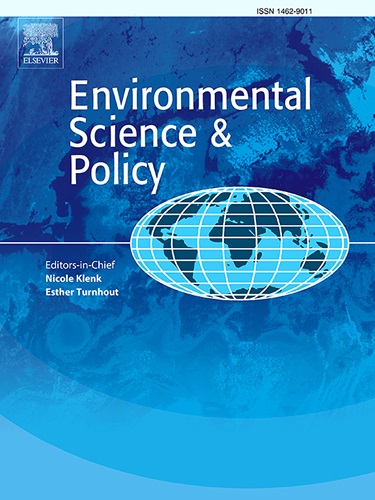Out of flood front areas: Wetland restoration may reduce internal displacement
IF 5.2
2区 环境科学与生态学
Q1 ENVIRONMENTAL SCIENCES
引用次数: 0
Abstract
Heavy rainfall and flooding have triggered record numbers of displacements in southern Brazil. Evidence indicates that human-driven climate change is exacerbating displacement trends in South America. Human factors, including inadequate flood protection systems and wetland degradation for agricultural expansion, further amplified the devastation. The economic toll is staggering, with losses exceeding US$6.1 billion in income and recovery costs estimated at US$7.2 billion. We advocate for a multi-stakeholder approach that integrates wetland restoration, disaster risk financing, and institutional coordination, aligning with existing frameworks such as Brazil’s National Climate Change Policy and Biodiversity Strategy and Action Plan. Displacement costs are still not often integrated into national policies and planning. Voluntary relocation, often without minimal support from local governments, is the overall rule in many hazard-exposed communities. Planned relocation is a complex, long-term strategy requiring substantial investment. Options of early warning and shelter may be discouraging where the perceived risk is high. In such cases, state officials may incentivize landowners to abandon lands destined for wetland restoration. Although the idea represents a significant paradigm shift, there are few available options where the river fluctuations are extreme. Beyond relocating at-risk communities, effective flood risk management must incorporate wetland restoration into climate adaptation policies. Lessons from global cases demonstrate the need for structured funding, landowner incentives, and community-driven relocation strategies. As Brazil prepares to host COP30, prioritizing wetland recovery could position the country as a leader in climate resilience while addressing the urgent needs of flood-vulnerable populations.
远离洪水前沿地区:湿地恢复可以减少内部位移
暴雨和洪水导致巴西南部流离失所人数创历史新高。有证据表明,人为驱动的气候变化正在加剧南美洲的流离失所趋势。人为因素,包括防洪系统不足和因农业扩张而导致的湿地退化,进一步加剧了破坏。经济损失令人震惊,收入损失超过61亿美元,恢复费用估计为72亿美元。我们主张采取多方利益相关者的方式,将湿地恢复、灾害风险融资和机构协调结合起来,与巴西国家气候变化政策和生物多样性战略与行动计划等现有框架保持一致。流离失所的成本仍然没有经常纳入国家政策和规划。在许多易受灾害影响的社区,自愿搬迁通常没有得到当地政府的最起码的支持,这是普遍的规则。计划搬迁是一项复杂的长期战略,需要大量投资。在认为风险高的地方,早期预警和庇护的选择可能令人沮丧。在这种情况下,州政府官员可能会鼓励土地所有者放弃用于湿地恢复的土地。虽然这个想法代表了一个重大的范式转变,但在河流波动极端的地方,几乎没有可用的选择。除了重新安置面临风险的社区外,有效的洪水风险管理必须将湿地恢复纳入气候适应政策。全球案例的教训表明,需要结构性融资、土地所有者激励和社区驱动的搬迁战略。在巴西准备主办COP30之际,优先考虑湿地恢复可以使该国成为气候适应能力的领导者,同时解决洪水弱势群体的迫切需求。
本文章由计算机程序翻译,如有差异,请以英文原文为准。
求助全文
约1分钟内获得全文
求助全文
来源期刊

Environmental Science & Policy
环境科学-环境科学
CiteScore
10.90
自引率
8.30%
发文量
332
审稿时长
68 days
期刊介绍:
Environmental Science & Policy promotes communication among government, business and industry, academia, and non-governmental organisations who are instrumental in the solution of environmental problems. It also seeks to advance interdisciplinary research of policy relevance on environmental issues such as climate change, biodiversity, environmental pollution and wastes, renewable and non-renewable natural resources, sustainability, and the interactions among these issues. The journal emphasises the linkages between these environmental issues and social and economic issues such as production, transport, consumption, growth, demographic changes, well-being, and health. However, the subject coverage will not be restricted to these issues and the introduction of new dimensions will be encouraged.
 求助内容:
求助内容: 应助结果提醒方式:
应助结果提醒方式:


